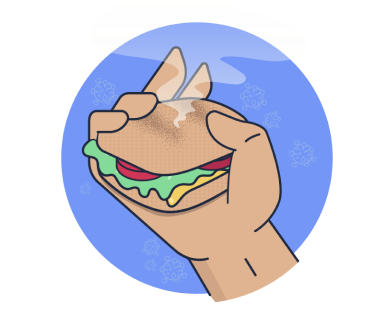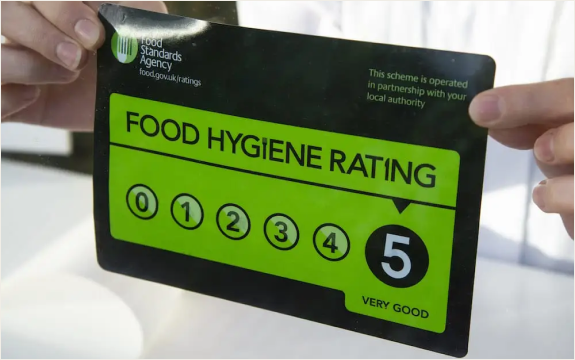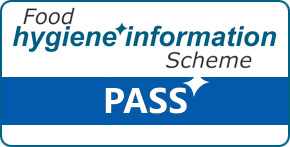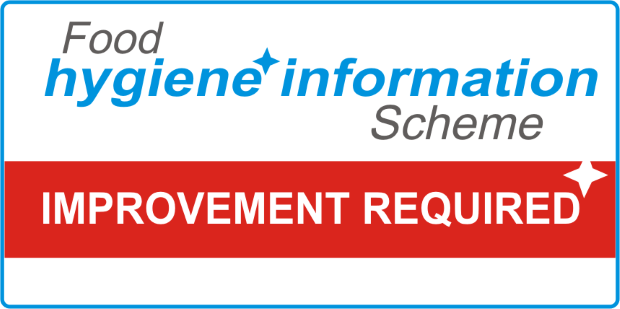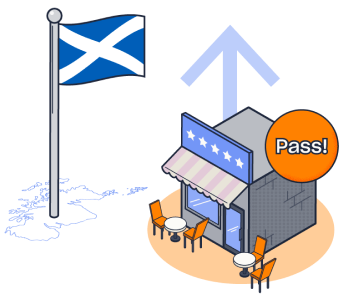For Businesses
Customers care
Businesses should take their food hygiene rating seriously. As more and more customers recognise the sticker, it can have a significant impact on your reputation and profit. Customers may decide to go elsewhere and avoid recommending you to others if you don’t uphold a good rating.
In a recent study, half of respondents had checked the food hygiene rating of a business in the past 12 months either at the premises or online. 80% would not eat at a restaurant or takeaway with a rating of 2, and this goes up to 94 and 95% for sites with a score of 1 or 0.
As displaying the rating is not compulsory in England, 49% of businesses choose not to do so. However, 61% of people reported they’d be less likely to eat at a business that did not have the food hygiene rating sticker at the entrance. This is because it creates worry that the establishment had a low food hygiene rating and was trying to hide it or it had poor hygiene standards.
We spoke to Eilidh Paton, owner of Alba Food Safety Consultancy and a Chartered Environmental Health Officer in Glasgow, about how crucial the scheme is.
Food Hygiene inspections and ratings are extremely important. From a legal perspective, they ensure businesses are compliant, but mostly, they are designed to help businesses provide safer food.
It also gives consumers the assurance that businesses are safe to eat in as they are regularly inspected by competent officers.

Eilidh Paton
Owner of Alba Food Safety Consultancy
The FSA actively encourages marketing a good rating to attract customers, and it’s clear why. Attaining and advertising a good food hygiene rating can have a significantly positive impact on the number of customers who choose to use your services, and therefore the profit you make.
One Poor Inspection Can Hurt
One potential limitation of the scheme is the fact that an inspection is essentially a random “snapshot” of the business, meaning the rating may not be wholly reflective of everyday quality. One recent news-worthy rating came from a restaurant in Hove which had previously been awarded the Tripadvisor Travellers Choice Award in 2021, but then received a one star food hygiene rating later in the year. It was later revealed the low rating was as a result of issues with the establishment’s fridges, which were giving a false reading at the time of the inspection. The owner immediately fixed this simple issue and is hoping to return to it’s usual high standard and reputation upon the next visit from the EHO.
It can take up to six months for premises to be re-visited following an unsatisfactory rating, and a further 28 days for the rating change itself to be reflected publicly. Therefore, there may be a discrepancy between a rating online and one displayed on a building. As a result, businesses could be losing customers despite having improved their standards since the last inspection.
If you want to make sure you are fully prepared for an EHO inspection download our free inspection checklist.
It’s not just about “Food Hygiene”
It’s easy to think that food hygiene is purely associated with how hygienically food is handled and prepared. However, the FHRS consists of more than this and each area is equally important to your overall food hygiene rating.
Issues with your management of food safety can significantly affect your overall rating. This is why you must demonstrate appropriate HACCP Systems, staff training records, and the knowledge and capability of the manager.
If you are looking for the knowledge and skills needed to manage your food business correctly then check out our online Level 3 Food Hygiene Course. It covers everything you need to know to ensure a food business is operating hygienically including contamination control, waste management and HACCP.

You Can’t Hide Your Food Hygiene Rating
Although displaying your Food Hygiene rating on your premises is optional, customers can still find it elsewhere. The Food Hygiene Ratings Information website has had more monthly visitors than ever since the start of the COVID-19 pandemic, showing that there is an increasing public interest in hygiene ratings.
Popular food delivery services are also following suit. Just Eat removed all zero rated sites from its platform in 2019 and any new restaurants wishing to join must have an FHRS rating of 3, whereas Deliveroo and Uber Eats are allowing businesses with 2 star food hygiene ratings to be listed on their platforms.
Furthermore, in response to the COVID-19 pandemic through which the hospitality sector particularly struggled, Just Eat worked alongside NSF to offer all 1 and 2 rated premises free audit and re-inspection support. The steps Just Eat have taken emphasises again that food hygiene ratings are an important part of a food business’s success, and are constantly being checked, not just by consumers, but also by other businesses.
Faking Your Food Hygiene Rating Isn’t Worth It
Displaying a false food hygiene rating is, under the Unfair Trading Regulations 2008, illegal and the number of penalties being handed out is steadily increasing as authorities crack down on offenders.
Recently, it’s been exposed that businesses have been buying fake food hygiene rating stickers from sites such as ebay, to display a false rating higher than the one they actually received. One eBay member sold 58 fake stickers from one advert alone, potentially making as much as £500. The listings have now been removed from the site and any found offenders will be charged with severe fines. It has been suggested that Food Hygiene rating stickers should carry a hologram or unique number to make them harder to fake.
In 2020, a Solihull takeaway was ordered to pay costs totalling £2,100 by Birmingham Magistrates Court for advertising a false food hygiene rating, proving that penalties for false food hygiene advertising are too high to risk.
Whereas the infrequency of inspections previously made false advertising difficult to police, it’s now easier and more common for customers to check the rating on the door against those held online by the FSA. Combine the fine with the inevitable bad press and reputational damage, faking a rating simply isn’t worth the risk to your business.
If you feel as though a recent inspection hasn't reflected your usual standards, use our guide to find out how to appeal your food hygiene rating.
If you’re looking for information on how to improve your hygiene rating, Elidh believes speaking to an EHO is a good place to start.
Our primary role is to provide advice rather than enforcement. EHOs would much rather a business engage with them and adopt their recommendations than view their interactions as a negative experience. So speak to your EHO, ask them questions, and ask for their advice.

Eilidh Paton
Owner of Alba Food Safety Consultancy




